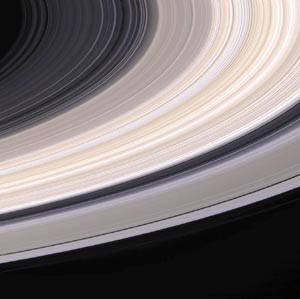
A peculiar gamma-ray burst has been detected by ESA’s INTEGRAL gamma-ray mission. This sub-energetic burst makes the link between an earlier anomalous event and all other bursts detected so far. It suggests that there is a wide population of such low-energy bursts yet to be discovered.
The afterglow of the gamma-ray burst, called GRB 031203, detected by INTEGRAL on 3 December 2003, has been thoroughly studied for months by space and ground-based observatories. The host galaxy of this event was identified at a redshift of z = 0.1055, corresponding to a distance of “only” 1.6 billion light-years. This makes GRB 031203 the second-closest burst measured so far after the peculiar GRB 980425 (z = 0.0085).
Since its discovery in 1998, GRB 980425 has been the subject of strong debate. It was found to be roughly coincident in time and direction with the very bright supernova 1998bw. If the two events are associated, it means that GRB 980425 is by far the nearest gamma-ray burst, only 130 million light-years away, and its inferred total energy is about 10,000 times less than for typical gamma-ray bursts. Having such a peculiar gamma-ray burst associated with an outstanding supernova was controversial, but it seems now, after further observations, that the two events are really physically linked and not a chance coincidence.
What remained unclear until recently is whether GRB 980425 was similar to the brighter gamma-ray bursts or an object of a different class. The discovery of a supernova associated with the “Rosetta stone” burst of 29 March 2003 (CERN Courier September 2003 p15) confirmed the link between supernova explosions and gamma-ray bursts suggested by GRB 980425. The newly discovered GRB 031203 now provides an example of a second sub-energetic gamma-ray burst like GRB 980425 and also associated with a similar supernova explosion. GRB 031203 is, however, at some greater distance and has a gamma-ray spectrum peaking at higher energies, as is observed for typical bursts.
It has been suggested that all gamma-ray bursts are similar explosions and that the observed differences are mainly due to orientation effects. The authors of the two papers on GRB 031203 published recently in Nature, however, think that GRB 980425 and 031203 are both intrinsically sub-energetic, because of their faint afterglow and the absence of evidence that they are off-axis explosions (Sazonov et al. 2004, Soderberg et al. 2004). It seems therefore that gamma-ray bursts are a broad class of phenomena with energies varying by several orders of magnitudes. The partition of energy between the supernova and the relativistic ejecta at the origin of the burst seems likely to depend on the mass, size and rotation rate of the exploding star.
As GRB 031203 is already near the limit of detection with current instruments, astronomers eagerly await the launch of NASA’s Swift mission scheduled for October. With its greater sensitivity, Swift should reveal a population of such sub-energetic bursts. Most bursts observed so far would then be only the bright tip of the iceberg.
Further reading
S Sazonov et al. 2004 Nature 430 646.
A M Soderberg et al. 2004 Nature 430 648.
Picture of the month

Launched on 15 October 1997, Cassini-Huygens, the co-operative mission of NASA, ESA and the Italian Space Agency, finally reached Saturn on 1 July 2004. Twenty-three years after Voyager 2’s fly-by, the ringed planet is again the subject of human curiosity. This exquisite natural colour view of its rings was taken at a distance of 6.4 million km from Saturn just nine days before the craft entered orbit. The rings are made of countless individual particles orbiting Saturn together. They range in size from large boulders to dust grains and are primarily made of water ice contaminated by rock or carbon compounds. (Credit: NASA/JPL/Space Science Institute.)





